‘My day-to-day life is one of panic. I even have a bag packed near my front door so I can dash equipped if I have to,’ one British expat living near Naples tells The i Paper
For years, living by the sea near Naples was calm and easy for Julie Sutton, despite the “supervolcano” lying beneath her.
Ms Sutton, a British expat from Manchester, moved to Pozzuoli in southern Italy over four decades ago.
The city lies in Italy’s Phlegraean Fields, or Campi Flegrei, an enormous caldera to the west of Naples that is part of a volcanic arc sweeping through Campania that includes Mount Vesuvius.
The Campi Flegrei are often dubbed a “supervolcano”, which, according to the United States Geological Survey, describes a volcano that can produce a magnitude-eight eruption on the Volcanic Explosivity Index, releasing 240 cubic miles of material. However, the Campi Flegrei’s largest-known eruption 39,000 years ago is estimated to have hit seven on the index.
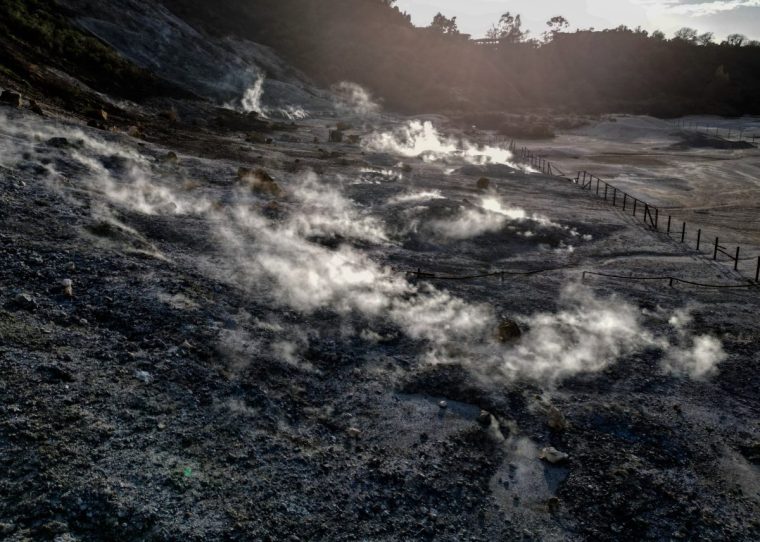
Although the volcano has been dormant since a 1538 eruption, a series of recent earthquakes has – literally – shaken residents living in Pozzuoli and other towns including Bacoli, Monte di Procida, Quarto, as well as some districts of Naples.
Ms Sutton says she no longer feels safe in the place she has called home for most of her life. Now she and other locals are prepared and ready to flee at all times.
“My day-to-day life is one of panic and the sheer unpredictability of the shakes has led me to take quick showers,” she told The i Paper. “I even have a bag packed near my front door so I can dash equipped if I have to.”
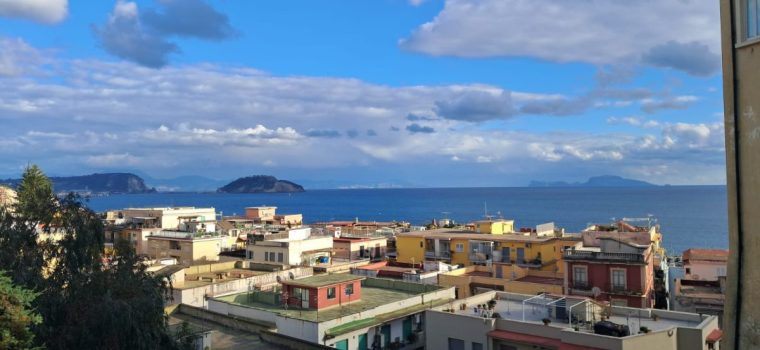
Three earthquakes in the past three months have hit at least four on the Richter scale, enough to smash plates and glass indoors and crack outside walls.
This year alone there have been 4,431 tremors in the Phlegraean Fields zone, according to the Vesuvius Observatory at Italy’s National Institute of Geophysics and Volcanology. Last year the number reached 6,740.
And since January 2024, some parts of the fields have risen by about 20cm, a phenomenon called bradyseism. The American Geographical Society has pointed to possible magma movement beneath the surface as causing the ground deformation, as well as noting increased carbon dioxide emissions and a rise in seismic activity.
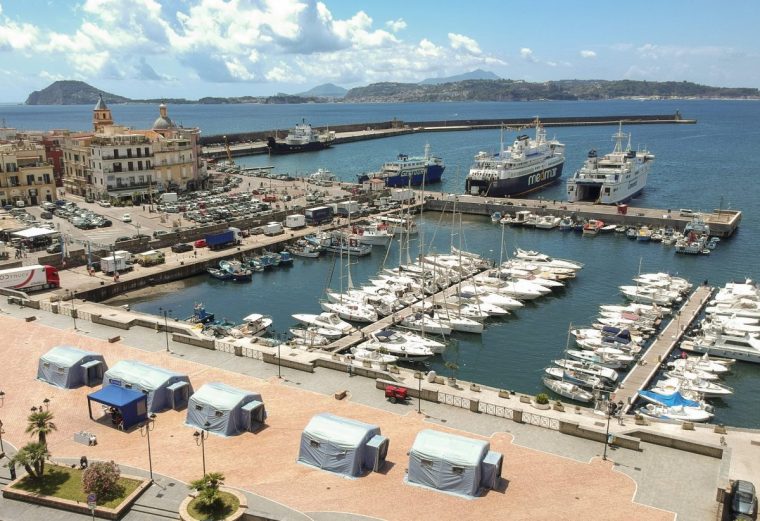
Although most of the tremors have been low magnitude, generally below 2.0 on the Richter scale, seismologists warn that activity is increasing. They compare it to seismic patterns seen in the 1980s, when 40,000 people were evacuated from their homes due to intensified shaking.
Over half a million people live in the red zone where Pozzuoli lies, which is the area most at risk of pyroclastic flow. Another 800,000 live in areas that would face significant volcanic ash falls. Some four million in total live within 20km of a possible eruption.
Were there to be such an eruption, we would see widespread evacuations, enormous damage to towns, villages, transport infrastructure and agriculture.
Ms Sutton and her neighbours have become so alarmed that they called an emergency meeting about where to relocate if the quakes worsened.
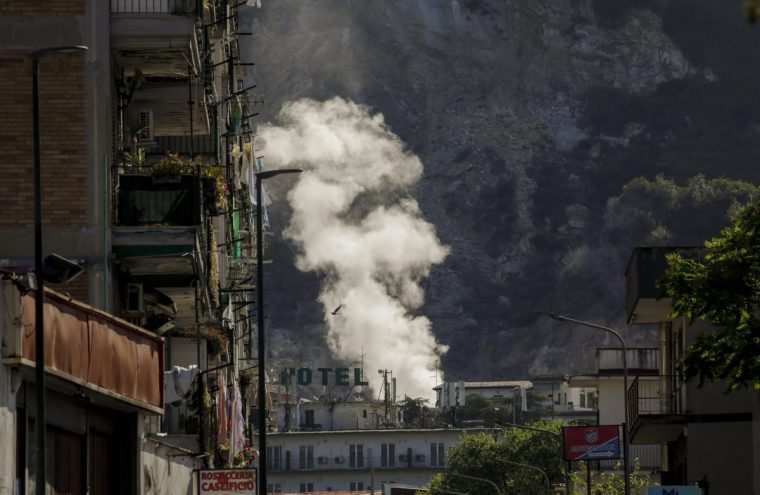
“I live on the third floor and I feel them a lot more,” she said. “The recent ones have frightened me to death and I thought the end was here. The table was shaking and everything ceramic fell and smashed.
“But the thing that got me was the noise. It was like a train hit the house. I’m in a constant state of tension.”
After an earthquake reached a magnitude of 4.6 at the end of June – the strongest to hit the area in 40 years – Mauro Antonio Di Vito, director of the Vesuvius Observatory, said: “The event does not surprise us. Even after weeks of seismic silence, the rock can accumulate stress and then release energy. This is typical behaviour of the Phlegraean system.”
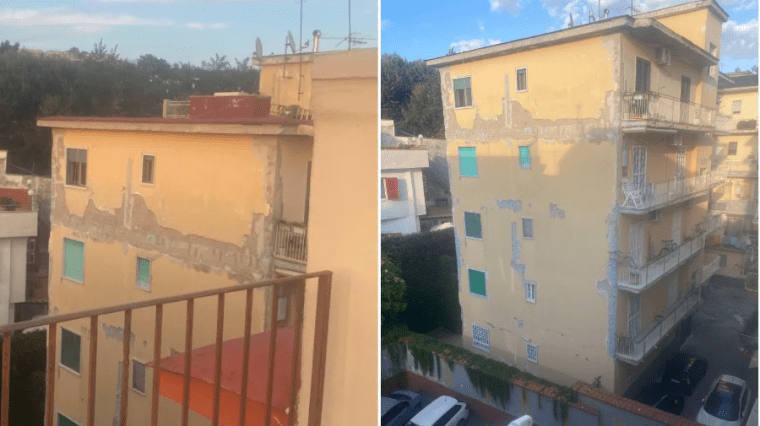
Seismologists say there is no imminent threat of the supervolcano erupting.
However, the local government has discussed drawing up emergency evacuation plans in the event they are needed.
This provides little reassurance to Ms Sutton, who has cracks in her walls and can see damage to the building opposite hers. She says the local government has proposed using drones to check the damage to buildings, but she has not seen any action yet.
Under Italy’s 2025 national budget, €100m (£87m) has been allocated for residential buildings at risk of damage from seismic activity. Inspections to the buildings are free of charge and can be requested from local municipal offices in Pozzuoli, Bacoli or Naples until the end of this month.
Back in March, local authorities also carried out a large-scale evacuation drill in the region, in preparation for a possible eruption.
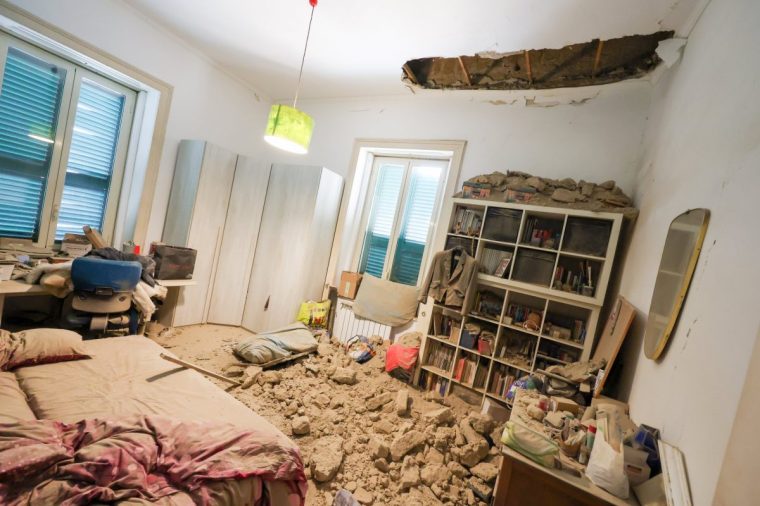
“People don’t feel safe here. There is an air of sadness and shops are closing, making it eerie. It’s a real shame as there is everything here. It could happen now or it could not happen again for 20 years,” Ms Sutton said.
However, others take a more sanguine view. Laurie Frasco, 37, from Manchester feels differently.
She moved to Pozzuoli two years ago from Hawaii and previously lived in earthquake-prone California, which means she is more accustomed to seismic activity.
“I don’t find them scary because I can’t do anything about it,” said Frasco. “But in Pozzuoli sometimes a two [on the Richter scale] feels like a four even though it isn’t. I think it’s because the motion is different – it feels like the ground is going up and down rather than side to side.”
Ms Frasco said her house did not have cracks, which is why she was not as afraid. Still, she has seen signs of impact and said an entire road had been closed off in the centre of the town due to bricks falling from an old building.
“I understand why they’ve closed it,” she said. “What is a few bricks today could be a whole building in the next earthquake. I guess only time will tell.”
